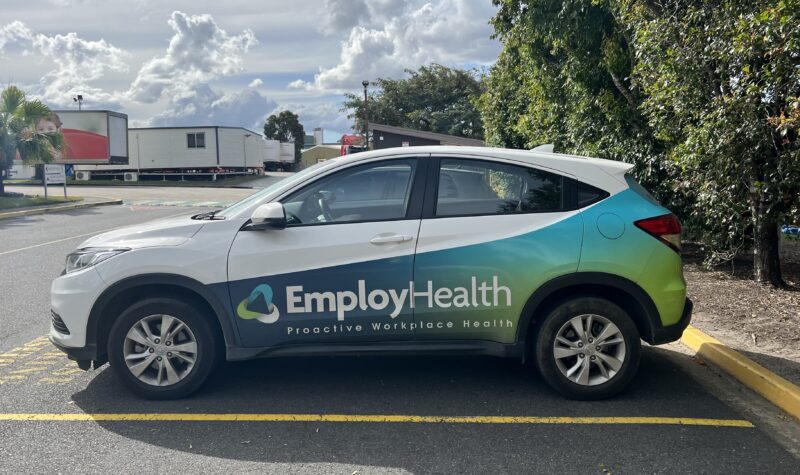Sitting is not inherently bad for you. However, too much of anything can be. The more you sit throughout your day, the greater the risk of exposing yourself to neck or back pain. Poor ergonomics in any position has the potential to place abnormal or prolonged load on body structures that aren’t intended to take on that load. When it comes to driving, this is a particularly important consideration, especially when you’re making long trips several times a week (which is typically the case for people driving for work). Incorrect sitting and vehicle ergonomics can lead to pain, fatigue and even stress.
Having someone set your vehicle up in the most ergonomic position alone is generally not enough to make a permanent change. This is similar in concept to “how to lift” exercise training, which doesn’t provide effective ongoing support for the activity. There are many other, more important risk factors that have a profound effect on your body’s ability to accept physical load, and recover from it. What we’ve learned does work is giving you the tools in your toolkit to recognise postures and positions that may cause abnormal loading, and teaching you the skills to correct your vehicle ergonomics yourself.

As an example, if you’re reading this at your desk, try slumping over as much as possible and reaching over your shoulders to squeeze your upper trap muscles. See how tight they are, and feel whether there’s any tenderness. Move your head from side to side, up and down. Do you feel restricted in your range? The answer is, most likely, yes.
Now, sit up tall as if someone is pulling a string from the top of your head. Pull your shoulders up as high and as far back as possible, and then slowly lower them to a comfortable position without letting them roll forward. Use one hand to squeeze your upper trap again. What’s the difference this time? Softer? Less tender? Move your head like before. Do you have more range now without any stretching sensation? How we position our body changes how the load is distributed, and over time this can be the difference between pain and performance. Just like when sitting at your desk, the same principles can be applied to vehicle ergonomics.
Vehicle ergonomics checklist
When setting up your car with vehicle ergonomics in mind, there’s a balance between safety and comfort. Safety comes first – you must ensure that these safety principles are adhered to as a first priority. Check that:
1
The top of the headrest is level with the top of your head.
2
Your head is less than 2.5cm from the head rest.
3
The view of the road, dashboard and mirrors (rear view and side) is not obstructed.
4
You can fully depress every pedal.
5
The steering wheel is not touching your legs.
6
Ensure your thighs are fully supported by the seat cushion. There should be a gap of 2-3 fingers between the back of your legs and the seat.
7
Your knees should not be higher than your hips.
8
Tilt the backrest of your chair to 100-110 degrees.
9
Have continuous support along your back, up to shoulder height. If it helps, you can try using a rolled-up towel to offer more lower back support.
10
Relax your shoulders to have a slight bend in your elbow.
Remember though, that everyone is different – shapes, sizes and even personal preferences mean that setting up your car should be individualised. At the end of the day, always remember:
THE BEST POSITION IS THE NEXT POSITION!
Take regular breaks when driving long distances. At the bare minimum, stop every 2 hours and get out of the car. You can do a small exercise routine including mini squats, calf raises and shoulder rolls to help with muscle pains throughout your body. At the end of the day, it’s all about changing where load is applied to your body rather than having the perfect posture.

So to sum up, vehicle ergonomics is something that everyone who takes part in any amount of driving should be aware of. Making use of the tips and techniques outlined in this post will set you on the right path, and applying them on an ongoing basis will reduce your risk of suffering from back pain, fatigue, and the many other negative consequences associated with incorrect vehicle ergonomics.
If you would like to learn more about vehicle ergonomics, or are interested in conducting driving & vehicle ergonomic assessments at your workplace, you’ll find more information about Employ Health’s Driving & Vehicle Ergonomic Assessment services here.
